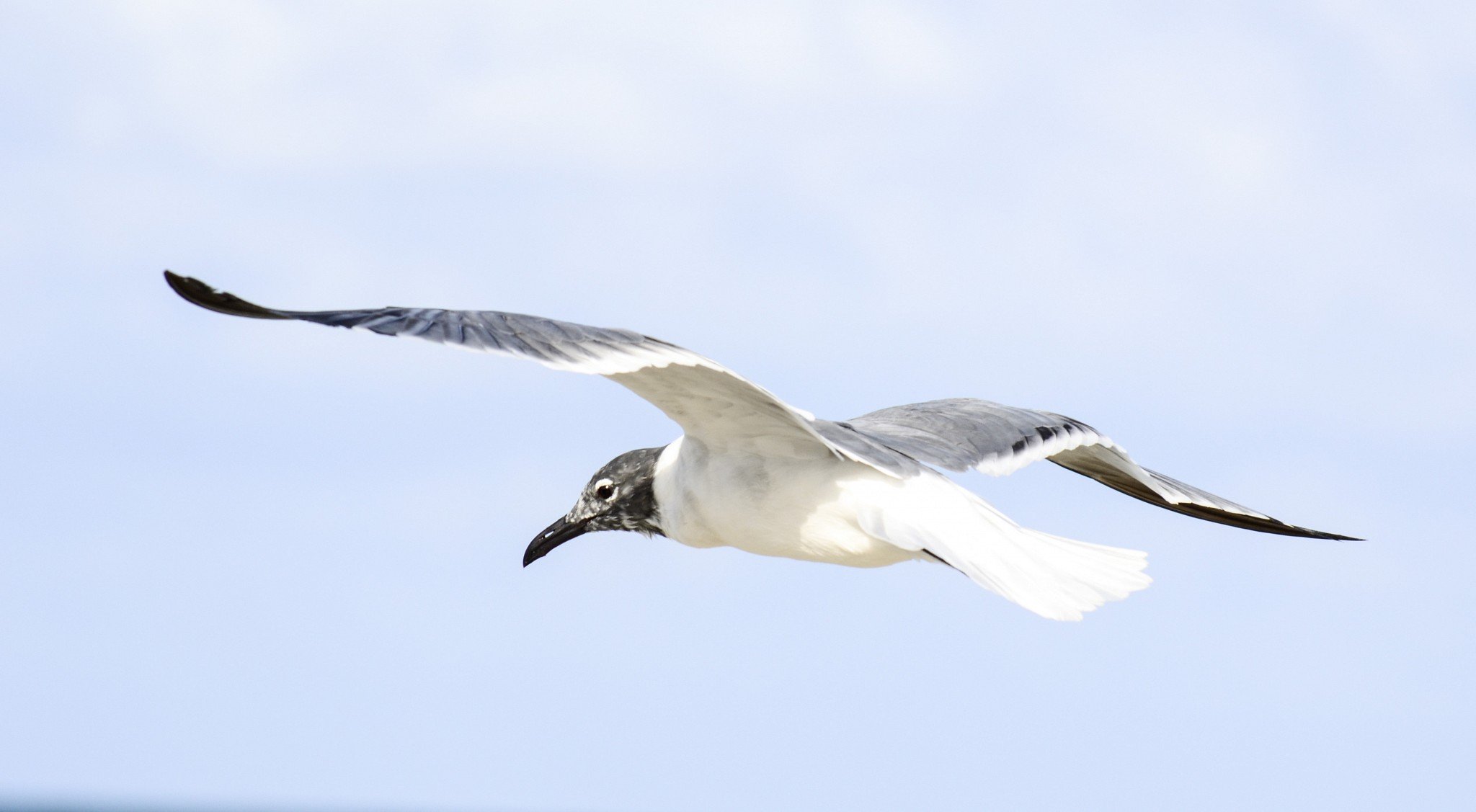The Gaviota of Miami Beach: Characteristics, Behavior, Habitat, and Conservation Efforts

Gaviota, also known as the Laughing Gull, is a species of bird that is commonly found in Miami Beach, Florida. These birds are known for their distinctive call and their striking appearance. In this article, we will discuss the physical characteristics, behavior, habitat, and conservation status of the Gaviota in Miami Beach.
Physical Characteristics
The Gaviota is a medium-sized bird that measures around 16 inches in length and has a wingspan of about 39 inches. They have a black head, white eye-ring, and a long, bright red bill. Their body is a slate-gray color, and they have black wings with white tips. During the breeding season, their heads turn a deep chocolate brown, and their bills become even brighter red. They also develop a black hood and a white crescent around their eyes.
Behavior
The Gaviota is a social bird that is often found in large flocks along the coast. They are known for their distinctive call, which sounds like a laughing sound. They are opportunistic feeders and will eat a variety of food, including fish, crabs, and insects. They are also known to scavenge for food and will often steal food from other birds. During the breeding season, they will form pairs and build nests on the ground or on low vegetation.
Habitat
The Gaviota is a bird that is commonly found along the coast of Florida, including Miami Beach. They prefer to nest on beaches, dunes, and islands. They are also known to frequent estuaries, salt marshes, and tidal flats. They are generally found in areas with open water, and they can often be seen diving into the water to catch fish.
Conservation Status
The Gaviota is a species of least concern, according to the International Union for Conservation of Nature (IUCN). This means that they are not currently considered to be at risk of extinction. However, their populations are declining in some areas due to habitat loss and disturbance. The destruction of coastal habitats, such as beaches and dunes, can have a negative impact on the Gaviota's nesting sites. Pollution and climate change can also affect their food sources and disrupt their breeding cycles.
In Miami Beach, there are several conservation efforts underway to protect the Gaviota and other coastal species. One of these efforts is the Miami-Dade County Beach Erosion Control and Hurricane Protection Project, which aims to protect the beaches and dunes along the coast. The project involves beach renourishment, which helps to maintain the natural habitat of the Gaviota and other beach-dwelling species.
Another conservation effort in Miami Beach is the Audubon Society's Bird-Friendly Communities program. This program encourages individuals and businesses to create bird-friendly habitats by planting native plants and reducing the use of pesticides and other harmful chemicals. The program also promotes responsible pet ownership and educates the public about the importance of protecting bird habitats.
The Gaviota, or Laughing Gull, is a beautiful and unique bird that is commonly found along the coast of Miami Beach. While their populations are currently stable, they face threats from habitat loss, pollution, and climate change. Conservation efforts, such as beach renourishment and bird-friendly habitat programs, are helping to protect the Gaviota and other coastal species. By continuing to support these efforts, we can ensure that future generations will be able to enjoy the beauty and diversity of Miami Beach's wildlife.